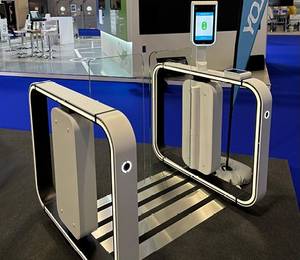The County of Renfrew in Ontario, Canada is working in partnership with InDro Robotics, Cradlepoint and Ericsson to reduce time to treatment in private, residential and rural areas; test flights showed the drones arriving more than seven minutes before paramedic vehicles.
Working in partnership with technology providers, including InDro Robotics, Cradlepoint and Ericsson, the trial demonstrated the drones’ capabilities to arrive more than seven minutes before paramedic vehicles during each test flight. The County of Renfrew Paramedic Service will use these results to plan deployment strategies that reduce time to treatment for people suffering cardiac arrest, and for those who need urgent medications, in private, residential or rural locations.
Completed in September 2019, the trial involved the County of Renfrew Paramedic Service flying the first LTE-connected drones equipped with AEDs to locations in a 10-mile operating radius that are BVLOS of emergency services and pilots. This project is one of the first in the country to be granted permission for this capability, which could significantly expand the reach of these emergency services. Successfully delivering AEDs to remote patients in need has the potential to improve survival rates for people suffering cardiac arrest or other dire medical conditions.
The trials on Sept. 21-22, 2019 were a resounding success, with the drone arriving at least seven minutes before the paramedic vehicles during each test run. The drone flew over cellular to remote take-off points selected by GPS and landed successfully to deliver an AED to the onsite researchers. They then utilized the device to deliver required shocks to a medical mannequin. Translated to an actual cardiac arrest, the extra time provided by the drones would be crucial in saving the victim’s life.
As technology partners for the trial, InDro Robotics supplied the unmanned aerial vehicles (UAV), with Cradlepoint providing its NetCloud Service, including the on-board, rugged IoT router that enables LTE connectivity for control data and video between the vehicle and its pilot over a Canadian mobile carrier’s LTE advanced cellular network. Ericsson will offer 4G LTE equipment with carrier aggregation, as well as its cellular network design support and drone research.
The advanced drone and BVLOS traffic management technologies provided by InDro Robotics and Ericsson, and use of LTE for control and real-time video streaming provided by Cradlepoint and the mobile carrier, form the centerpiece of the County of Renfrew trial and its objective to increase the range and reduce time-to-site for remote cardiac arrest victims.
Previous line-of-sight trials using drones to assist emergency services have operated within the limitations of non-cellular communications technology and without the ability to use video, limiting them to trips of approximately 4.5 miles. By using the LTE cellular network, the County of Renfrew initiative offers the potential to deliver AEDs to patients up to 80 miles. To improve the mission-critical communications associated with these deliveries, the drones share images and video with operators and employ artificial intelligence to manage key functions, such as collision avoidance, all enabled by the speed, bandwidth and reliability of the LTE cellular network.
“Given the large area and varied terrain that the county encompasses, it is often difficult to get paramedics to patients in a timely fashion, so we have taken a layered approach to their response. We have been successfully using drones to support our emergency responders for several years, but until now, the operators have had line-of-sight of the situation. We will now have further reach than ever,” explained County of Renfrew Paramedic Chief Michael Nolan.
“I am very impressed with the results of these flights, advancing the science and operations, delivering life-saving tools such as a defibrillator by drone,” said Dr. Sheldon Cheskes of Sunnybrook Health Sciences Centre.
“This new drone technology is especially exciting when integrated into critical scenarios for paramedics – effectively enabling AED ‘on the fly,’” noted Philip Reece, CEO, InDro Robotics. “At InDro Robotics, part of what we focus on is custom design solutions for complex missions, and this is a perfect example of how drone software and hardware can provide a scalable solution to a very real problem. We’re thrilled to be part of this partnership, and to be able to demonstrate the capacity for drones and cellular technology at this life-saving trial.”
“This trial is an amazing illustration of one of Ericsson’s core beliefs, Technology for Good,” said David Everingham, vice president and chief technology officer, Ericsson Canada. “Ericsson’s portfolio for Critical Broadband Network capabilities allows service providers and government operators to meet the tough business and mission critical communication requirements on a cellular network. We are proud to partner on this innovative trial, as multiple companies join together to test how we can use 4G LTE networks and drones to help save lives in Canada.”
“The County of Renfrew’s forward-thinking approach to using UAVs and on-board cellular connectivity to extend the speed and range of delivery for life-saving emergency services represents how connected technology is transforming public safety,” commented John Campbell, vice president, Public Sector and Canada, Cradlepoint. “We are honored to be a part of the County of Renfrew’s ground-breaking trial, which promises to help advance public safety for rural communities everywhere.”












